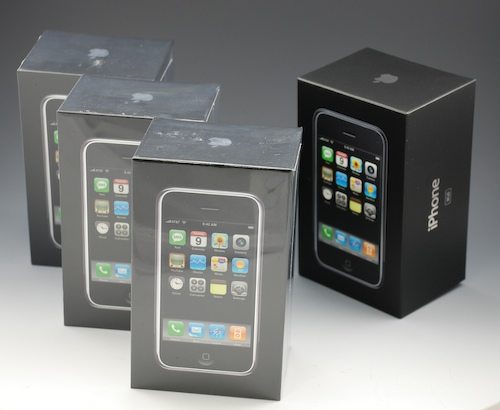The iPhone launch report card

The iPhone launch has come and gone and now it's time to recap the moving parts. Here's a look at the key components and how they graded out.
The product: A

The network: D
AT&T is clearly the weakest link in the iPhone ecosystem. The glitches that occurred over the weekend highlight AT&T's role. In what was a stellar weekend for Apple, AT&T couldn't get many phones activated. Its systems weren't ready for the volume and customer service reps weren't available on a Sunday. The iPhone launch was not a good opener for the "new AT&T," which looks a lot like the old one. Declan McCullagh adds that a company called Synchronoss carries part of the blame.
WR Hambrecht analyst Matthew Kather sums up the consensus on
"We believe that it is an amazing device, with the
only poor experience being the internet browsing experience on the lackluster and slow Cingular EDGE network (which we've been using for mobile internet access for roughly three years already on our Blackberry 8700)."
The supply chain: A
Apple met high demand with high supply. Throughout the weekend Apple seemed to have iPhones in stock. Apple's link detailing what stores had iPhone inventory was a nice touch (real time would have been better but why gripe) and highlighted the company's visibility into its supply chain. So why did things go smoothly? My hunch is that Apple preannounced the product well in advance and had time to plan. This is in contrast to a product that is announced and made available quickly. Apple had good planning.
Consumers: C
Demand forecasting: Incomplete
Piper Jaffray analyst Gene Munster has a research note projecting that Apple moved 500,000 units over the weekend. That sum, which gotten a lot of blog chatter, is well above his estimates of 200,000 for the June quarter. However, I'd take Munster's projection with a grain of salt. His survey is based on 253 people interviewed at Apple stores. Munster marvels at "the rate Apple was able to sell the handsets, with 50 cashiers processing up to 1,000 iPhones an hour in some cases." But other analysts such as Kather add that a lot of shoppers were playing with the iPhone, but not buying it.
The bottom line: No one has a clue how many iPhones moved over the weekend--until Apple discloses it. If Apple hits a nice round number, say 1 million units in three days we'll hear about it soon. If not, Apple will keep quiet with its quarterly results due in two weeks or so.
Kather's take:
"In summary, the initial weekend of iPhone sales appears strong to us, but with so much availability, sales could have been a lot stronger, in our view, given the supply on hand. We do not feel that we or anyone can accurately quantify the units sold by extrapolating from channel checks, but expectations ranged from a few hundred thousand to a million and a half, in our opinion."
J.P. Morgan analyst Bill Shope says iPhone demand "may have been disappointing, but it's still early." He is projecting 312,000 iPhone units over the weekend. One thing is certain: The folks that camped out for an iPhone didn't have to. That means demand may have been light or supply was much better than expected.
Overall, it's far too early to guess or grade whether Apple forecasted demand correctly. For headline purposes an iPhone sellout may have looked better. For the actual sales, it can't hurt to have ample supply that moves over a few days. When it comes to supply and demand you want a level that's just right.